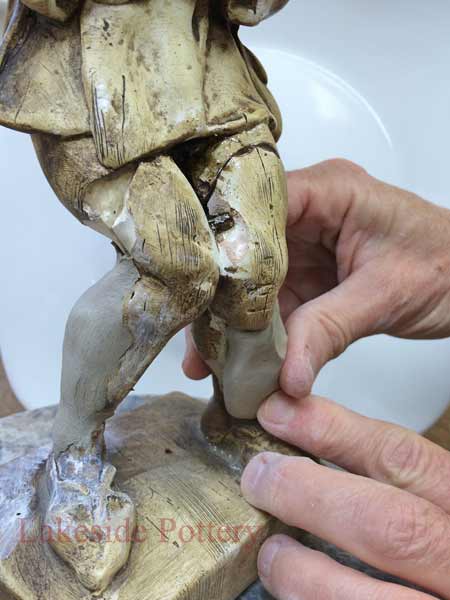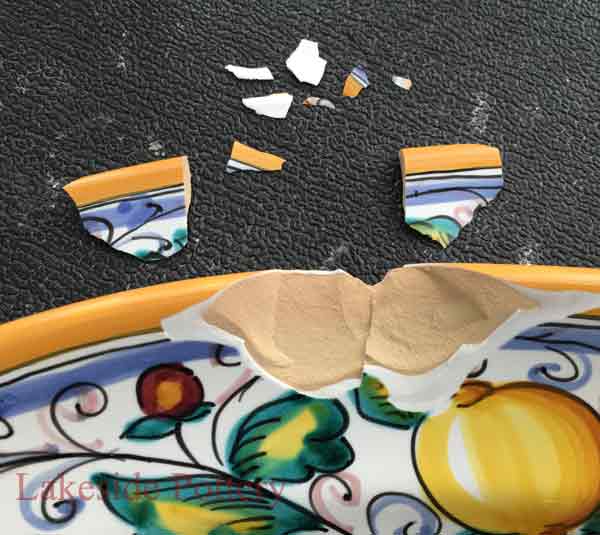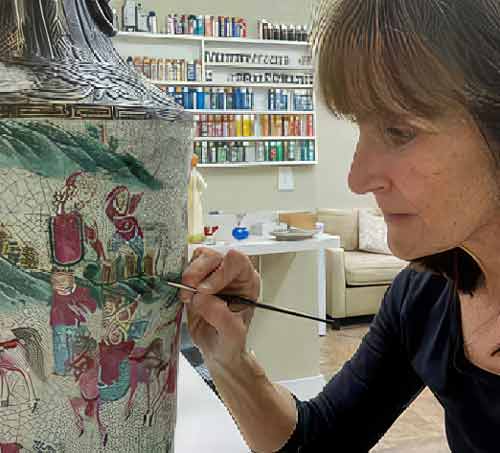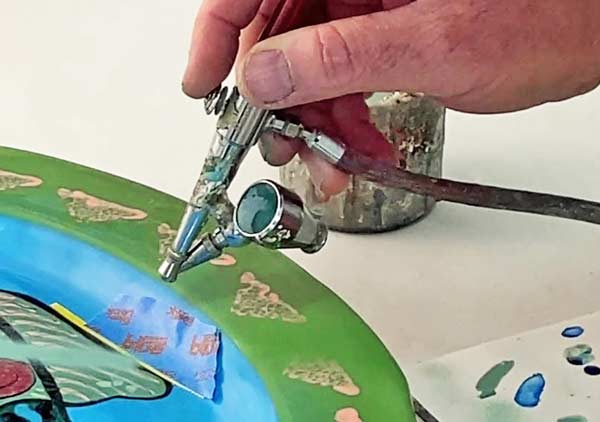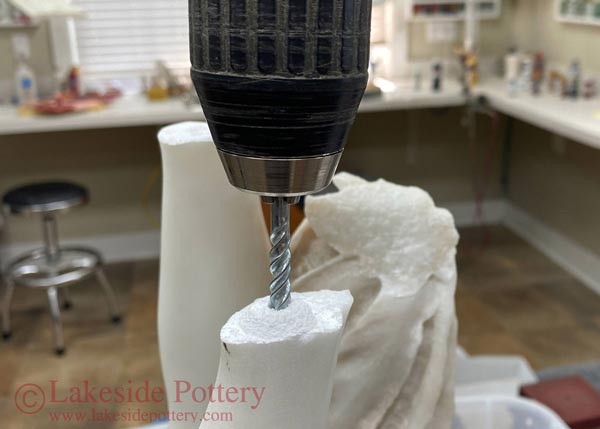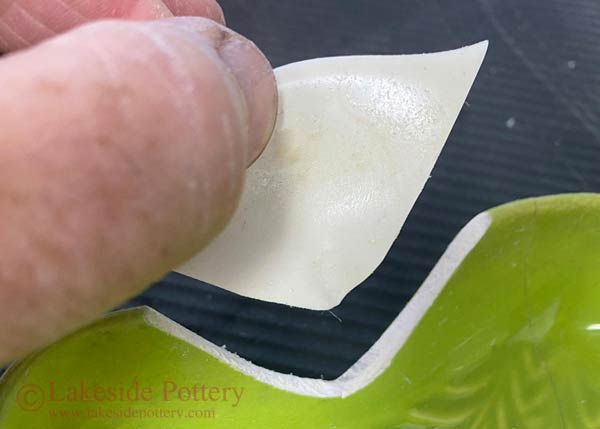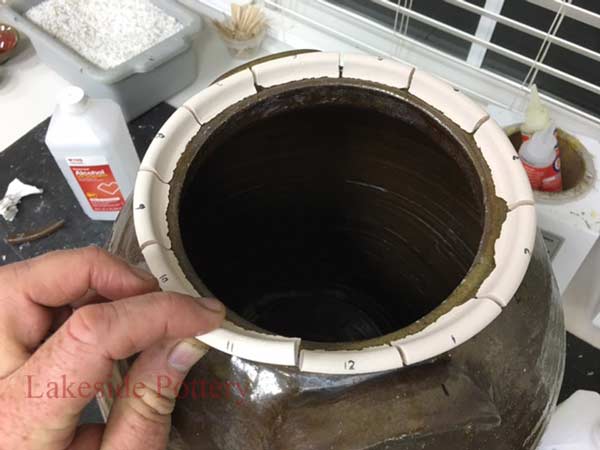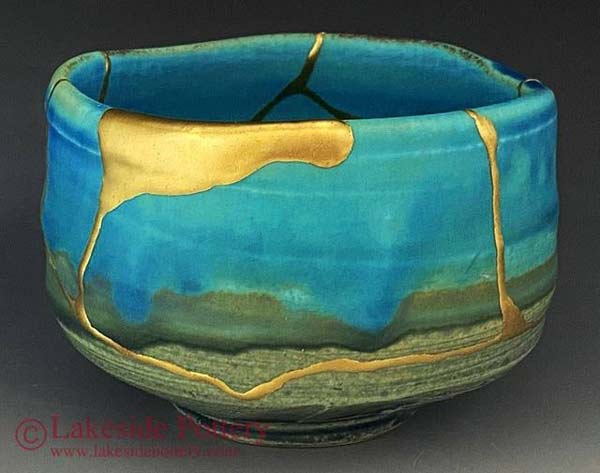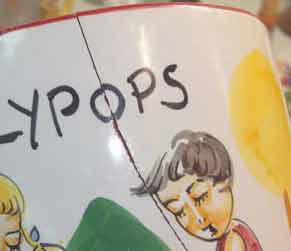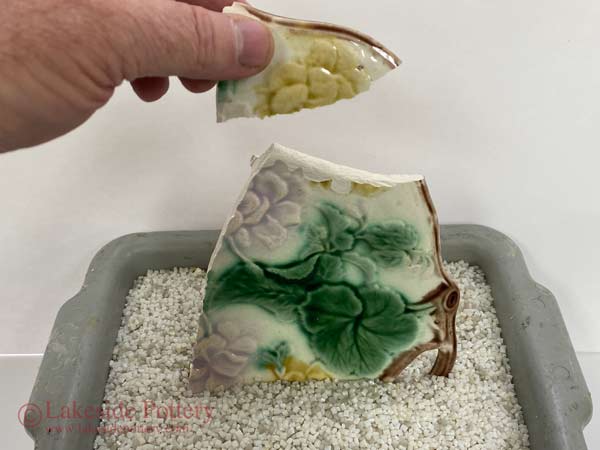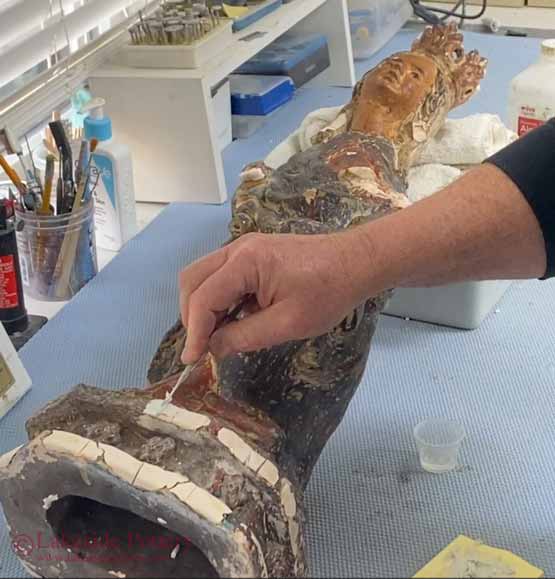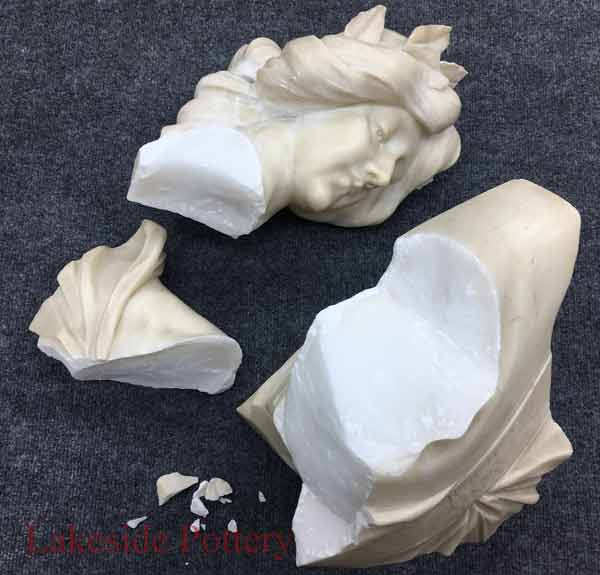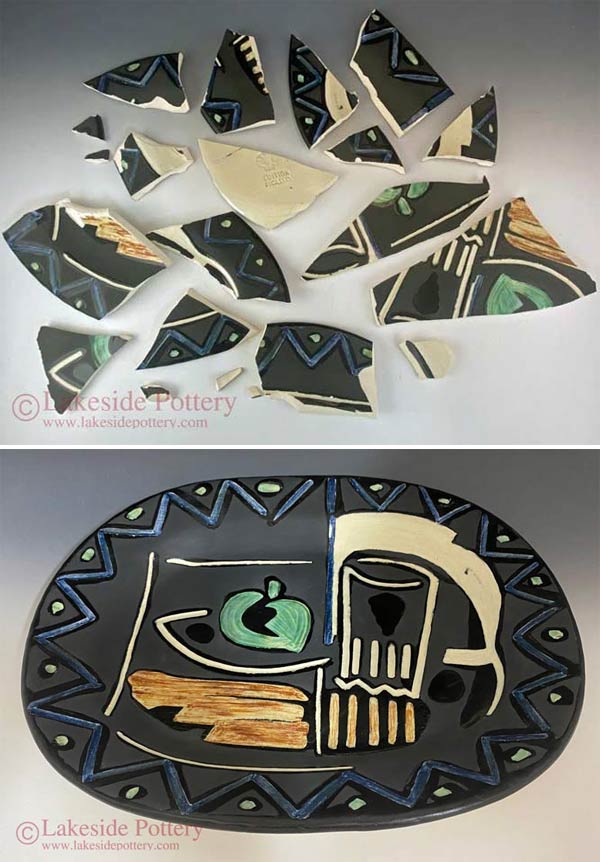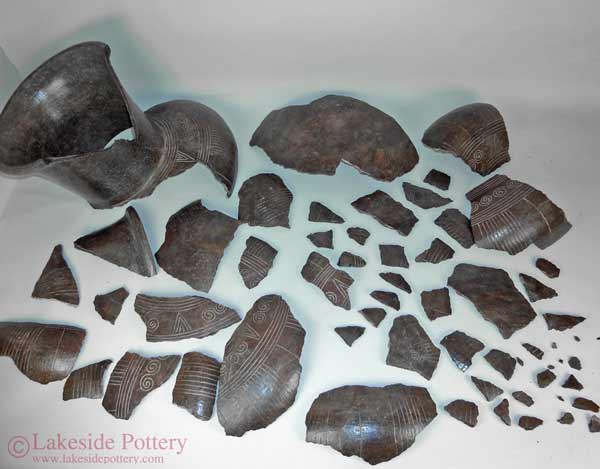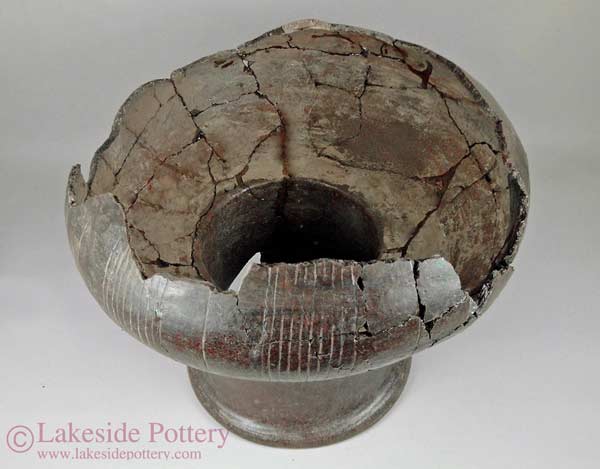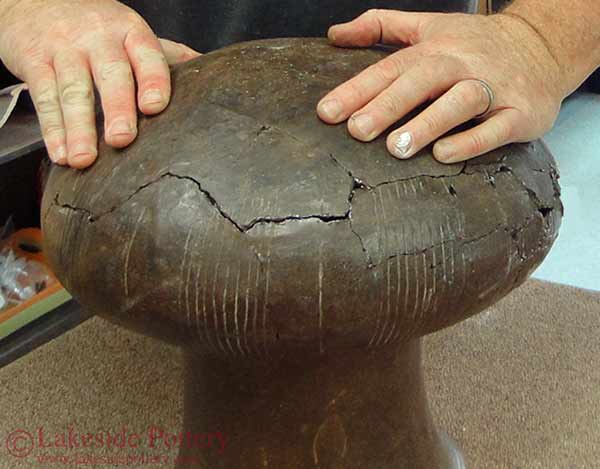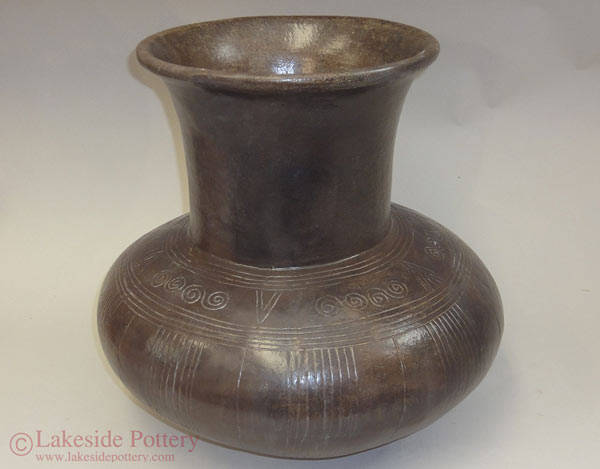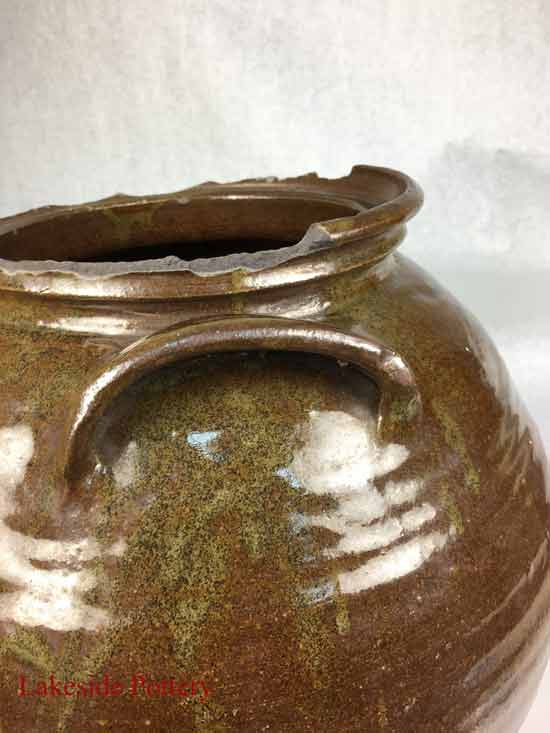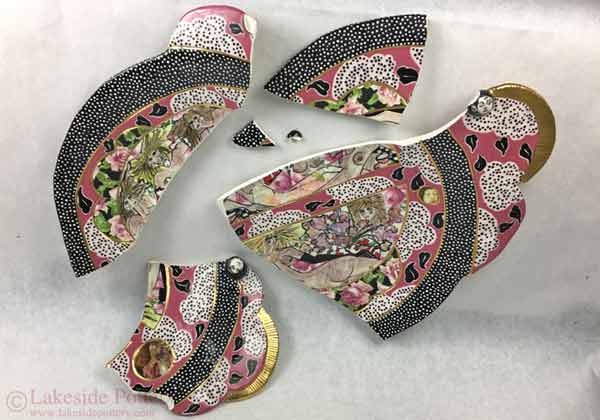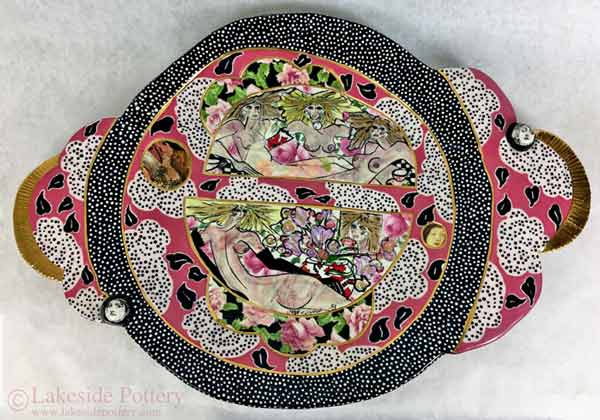Reversible ceramic repair explained: It is a restoration method where all materials and techniques used can be undone or removed in the future without damaging the original piece. This allows future restorers to re-treat the item if better materials or techniques become available. It’s commonly preferred by museums and conservators to ensure long-term preservation and ethical handling Non-Reversible ceramic repair explained: It is a a restoration method using materials and techniques that cannot be undone without risking damage to the original piece. These repairs prioritize a strong, seamless, and often invisible finish, making them ideal for display or sentimental items but not aligned with museum conservation standards. The idea of reversible restoration began decades ago, mainly because early restoration materials were often inferior and prone to failure. Adhesives and paints used in the past would degrade, discolor, or lose strength over time, forcing restorers to redo repairs repeatedly. Because of this, conservators emphasized the use of reversible materials so that future restorations could safely remove old repairs without harming the original artwork. However, modern restoration materials are vastly improved, offering much longer longevity, greater durability, and better resistance to aging. This advancement calls into question whether strict reversibility is still the best priority for collectors and restorers today. Museums generally insist on reversible restoration because their priority is preserving history for future generations. Another core museum goal is to have minimum impact on all original surfaces, ensuring that every repair disturbs the piece as little as possible. But many private collectors and studios like Lakeside Pottery have found that non-reversible, seamless repairs better meet the needs of people who want to enjoy their art every day without worrying about visible cracks or fragile repairs. Here’s what you should know before deciding what’s right for your collection. ________________________________________ Why Museums Prefer Reversible Repairs
|
||||||||||||||||||||||
|
In museum conservation, reversibility is a foundational rule. This means restorations are done using materials that can be softened or removed in the future without damaging the original object. The idea is that as restoration technology advances, or if mistakes are made, the repair can be undone to preserve the artwork’s integrity. To achieve this, museums use special adhesives and paints - like Paraloid B-72 - that are stable but can be dissolved with solvents. Conservators also follow strict guidelines to avoid altering the original surface too much. A key goal is minimal intervention, with repairs having the least possible impact on the original surfaces to maintain the artifact’s authenticity. One of the main tools for a seamless repair is concealing the break lines totally seamlessly. However, if done correctly, this usually involves airbrushing techniques that feather out the repair a bit, covering more of the original surface - something that breaks the strict museum conservation requirements. Modern true seamless repair, in most cases, fails the museum goal of having minimum impact on all original surfaces because this feathering extends beyond the break line and modifies untouched original areas. For museums, this approach makes sense because their goal is to preserve the piece as a historical document, not necessarily to make it look brand new. Visible repair lines or slight differences in surface sheen are accepted if it means future restorers can safely remove or redo the restoration. |
The Downsides of Reversible Materials for Collectors
While reversible restorations sound ideal in theory, they come with significant drawbacks - especially for collectors who want their pieces to look flawless and withstand everyday handling.
First, reversible materials tend to be less durable. They are softer and more prone to scratching or wearing down with regular handling or cleaning. For three-dimensional objects like ceramics and sculptures, which may be moved, touched, or dusted frequently, this can mean the repair weakens or becomes unstable over time.
Second, matching the color and sheen of the original piece is a big challenge with reversible materials. Because museum guidelines restrict techniques like airbrushing the edges to blend repairs into surrounding areas, repairs usually remain visible. The color might be slightly off, the gloss may not match, or the texture might differ. This makes the repair detectable, which can be frustrating if you want your piece to look whole and perfect - especially with glossy ceramic glazes or sculptures with complex finishes.
For collectors who want their art to look beautiful and feel solid, these compromises can reduce enjoyment and confidence in the restoration.
________________________________________
Why Non-Reversible Repairs Are Popular with Collectors
|
Non-reversible repairs use advanced, permanent materials like industrial-strength epoxies and UV-resistant cold glazes that cure hard and durable. These materials form a strong bond that holds up well over time, resisting damage from handling and environmental factors. The key to seamless, visually stunning repairs is concealing the break lines completely and blending colors and texture using airbrushing techniques that feather the repair over a larger area of the original surface. This creates smooth transitions, consistent color, and matching sheen, giving the piece a unified and flawless appearance. While this approach violates museum standards on minimal intervention and reversibility, as it modifies and covers some original untouched surfaces, it meets the aesthetic and practical expectations of many collectors. Collectors generally prefer these methods because their art is meant to be lived with and appreciated daily - not stored in climate-controlled archives where minimal handling is possible. |
________________________________________
Lakeside Pottery Studio Approach and Experience
At Lakeside Pottery Restoration Studio, over 90% of the restorations we do use this seamless, non-reversible method, usually by client request. Most of our customers want their broken heirlooms, collectibles, or sculptures restored to their original beauty and tactile wholeness, ready to display or handle with confidence.
While some traditional conservators criticize our approach for not following strict museum ethics, our reputation and client satisfaction tell a different story. We believe restoration should be transparent and honest. It’s not about hiding history or deceiving - it’s about revitalizing your piece so it can continue to tell its story in your home.
We respect the principles behind reversible conservation, but we also recognize that collectors have different priorities. For many, the best repair is the one that brings back joy and beauty without constant worry.
** See dramatic transformations in our Before & After Gallery
________________________________________
What’s Right for Your Collection?
|
Choosing between reversible and non-reversible restoration depends on your priorities. Museums prioritize historical integrity and future possibilities, so they accept visible repairs and limitations on aesthetics. But if you’re a collector, your focus is often on enjoying the art’s beauty, durability, and emotional connection right now. You want repairs that are strong, look great up close and in various lighting, and can handle the realities of display and occasional handling. Some restorers are developing hybrid methods that combine seamless repairs with thorough documentation and imaging (like x-rays or augmented reality), preserving both visual beauty and historical record. But these approaches are still emerging and not widely accessible. |
Final Thoughts
Restoration isn’t about right or wrong - it’s about what matters most to you and your art. If you want to preserve history for future generations, reversible repairs are essential. But if you want your ceramics and sculptures to look and feel whole again, non-reversible repairs often deliver the best results.
At Lakeside Pottery, we honor restoration as both an art and a craft. When done carefully and transparently, permanent, seamless restoration can bring life back to broken art, so you can continue to enjoy it fully for years to come.
| COPYRIGHT Lakeside Pottery LLC ; COPYRIGHT policy; |
.

